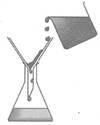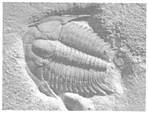Test: Science And Technology - 2 - Class 5 MCQ
15 Questions MCQ Test Additional Study Material for Class 5 - Test: Science And Technology - 2
An ocean current is a continuous, directed movement of seawater generated by forces acting upon it. Because of their heating and cooling qualities, they can affect weather and climate. How do ocean currents transfer heat in the ocean?
The earth is covered by a number of imaginary lines that help us study it. For example, isotherms are lines which connect places with the same temperatures. Which lines connect places with equal atmospheric pressure?
| 1 Crore+ students have signed up on EduRev. Have you? Download the App |
You would not be able to operate your remote control without this. It is a compact power unit that converts chemical energy into electrical energy. What is it?
Conductors are materials and substances that allow electricity to pass through them. Which of the following is a conductor?
Gravitation or gravity is a natural phenomenon by which all things having mass are brought toward or gravitate toward one another, including stars and planets. Which of the following is the best example of gravitation or gravity?
An element is a substance that cannot be chemically interconverted or broken down into simpler substances. Which of these is an element?
Filtration can separate substances from a mixture by using a funnel and filter paper. Which of the following materials can be separated using filtration?

Of the more than a hundred elements known to man, most are metals. Which of the following is a property of metals?
The CPU is an important part of your computer. You might call it the computer's brain. What does CPU stand for?
Volume can be defined as the amount of space that a substance or object occupies, or that is enclosed within a container. Which of the following tools would you use to measure volume?
When light rays move from one medium to another, they bend because of varying speeds in different mediums. What is this phenomenon called?
It is a blanket-like layer that surrounds the earth. It contains a mixture of gases including oxygen which most organisms need to breathe. It protects us from the harmful radiations of the sun. What is this layer called?
Fossils are the preserved remains or traces of animals, plants, and other organisms from the remote past. Fossils of sea organisms that no longer exist are sometimes found in high mountain areas. How do scientists explain these discoveries?

It is a reflection of sound that arrives at the listener with a delay after the direct sound. You often observe this phenomenon in mountainous areas. What is it called?
Which of the following is used to see objects that are too small for the unaided eye?
|
10 docs|23 tests
|
|
10 docs|23 tests
|

















